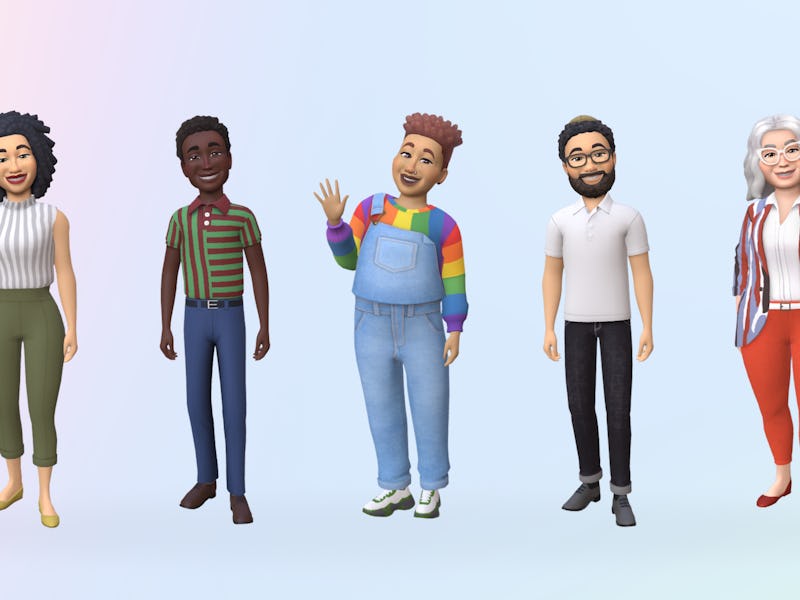How legs became one of Meta's make-or-break VR features
Meta's recently announced changes to its VR avatars are a showcase of just how sensitive the company is to criticism.

If there was one piece of news other than the new Quest Pro virtual reality headset that really drew attention at this week’s Meta Connect, it was legs.
Finally, after over a year of VR avatars that were just torsos, arms, and heads, Meta showed off what being “fully-embodied” should look like on its various VR platforms, alongside a bunch of new updates to Meta Avatars.
To sum it up in a tweet from the official Horizon World’s account: “Legs are coming soon! Are you excited?”
But how did legs become a feature worth celebrating? And how exactly is Meta bringing legs to VR? Well, you could say it started with a Facebook post.
No one really likes how Meta’s metaverse looks
The infamous VR Mark Zuckerberg selfie that started the most recent wave of criticism directed at Meta’s avatars.
The general animosity towards Meta’s vision of a mixed reality metaverse that can replace the internet has existed pretty much since the company rebranded in 2021. But the most recent wave of criticism directed towards the company’s VR visuals could probably be pinned to a Facebook post Meta CEO Mark Zuckerberg made celebrating the launch of Horizon Worlds (Meta’s social VR app) in France and Spain.
Zuckerberg’s selfie was unfavorably compared to Super Mario 64 and The Legend of Zelda: The Ocarina of Time, with particular issue taken with the simplistic visuals, the blank stare of Zuckerberg’s avatar, and the fact he has no legs. These are all valid criticism. Meta imagines wide swaths of your public and private life being able to be conducted in VR, and it seems fair to assume it should look better — or at least more real.
But there’s also the simple fact that it’s fun and easy to dunk on Meta. It’s clear the company made its metaverse pivot far earlier than was reasonable, and it’s sensitive to how people perceive it. The average person might not care if their avatar has legs, but Meta clearly thinks they do.
How Meta is bringing legs to VR
Mark Zuckerberg has (VR) legs now.
Meta has several updates planned for Meta Avatars, including a visual overhaul that will add more fidelity and realism (all the better for the face and eye-tracking that comes optional on the Quest Pro), a dedicated VR store for buying clothing and costumes for avatars, and yes of course, legs.
The next-generation avatars are designed to be more “expressive and detailed”, with the hope being that people will start cross-pollinating them across Meta’s other social media platforms, and even use them in video calls on apps like Messenger, WhatsApp, and eventually, Zoom. There’s no hard release date for the new Meta Avatars, but they’re set to arrive later in 2023.
Legs, on the other hand, are trickier. Per Zuckerberg, “legs are hard” because standalone headset and controllers are really only designed to track your head, arms, and hands. If your legs are under a desk or covered by some other part of your body, your VR system doesn’t really have a way of knowing where they are. Meta’s solution to that problem is to use an AI model that can predict your body’s position even if it can’t see all of it.
Zuckerberg didn’t go into detail on what that actually entails, but researchers at Meta’s Reality Labs recently published a study that could give us an idea. “QuestSim: Human Motion Tracking from Sparse Sensors with Simulated Avatars” (available on arXiv.org) covers how a model trained on motion-capture data of human movement can then use “sparse signals” from a headset and controllers to recreate fairly realistic lower body movements. The system is by no means perfect — the video above shows some examples — but it definitely suggests VR legs are doable.
Meta says full-body avatars will be introduced in Horizon Worlds first, before becoming available for other developers to implement in their own apps next year.
Eyes on the wrong ball
However silly, Meta seems to view selling the metaverse as an existential issue for its company, even if it’s burning through money and its valuation to make it happen. But even with some version of impressive tech like the hyperrealistic “Codec 2.0” avatars theoretically on the road map, it’s easy to wonder if realism is the right goal. To press, Meta has discussed realism in the metaverse as being less about how things look, and more about how they behave and feel. Do we need legs or high-fidelity faces? Or would the ability to make your avatar look however you’d like — be it a dragon or a robot — as long as it feels right and behaves the logic of the world, be enough?
Meta seems to have one opinion, but maybe the trouble with selling the metaverse is that the majority of people feel otherwise.
This article was originally published on